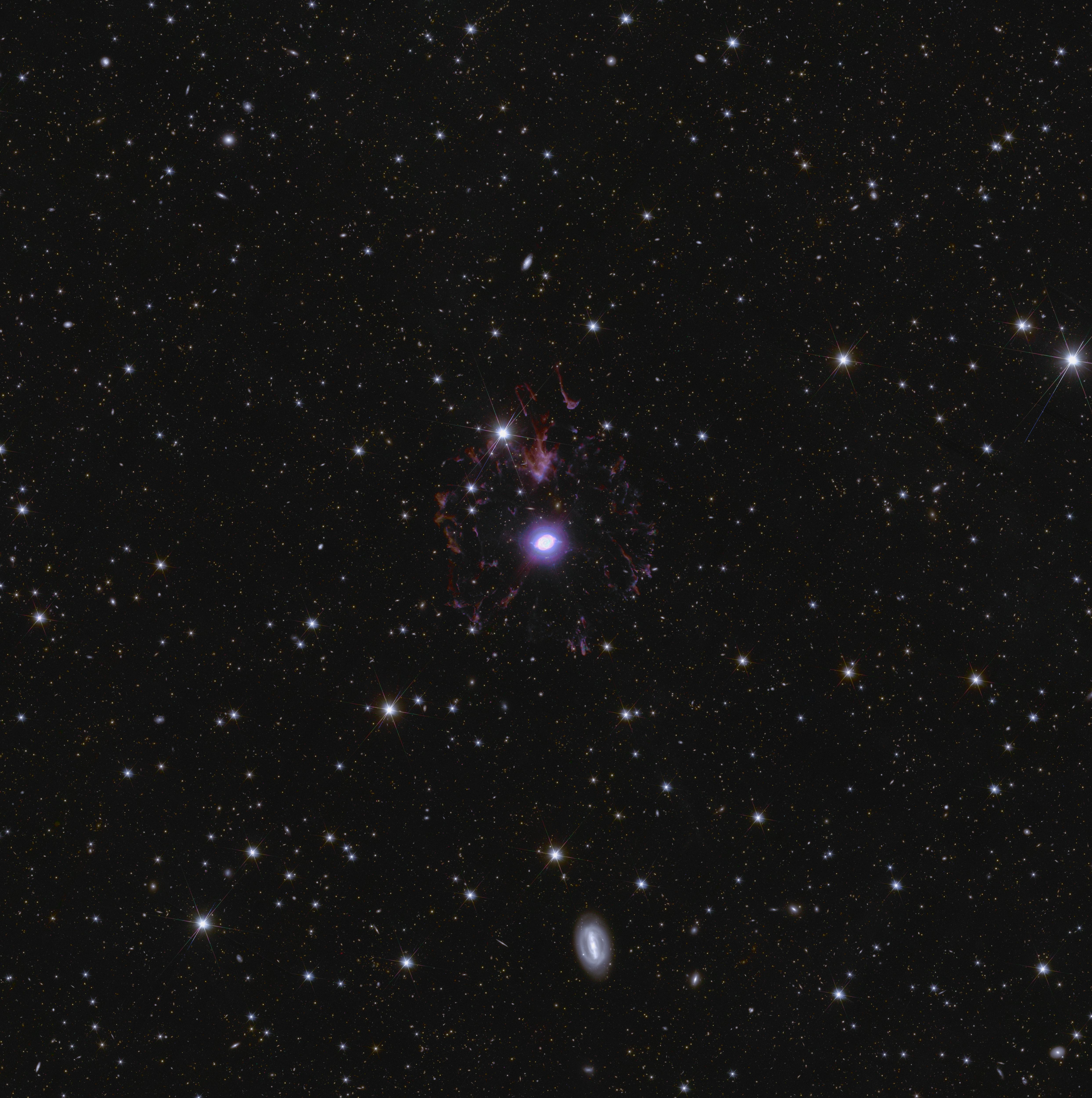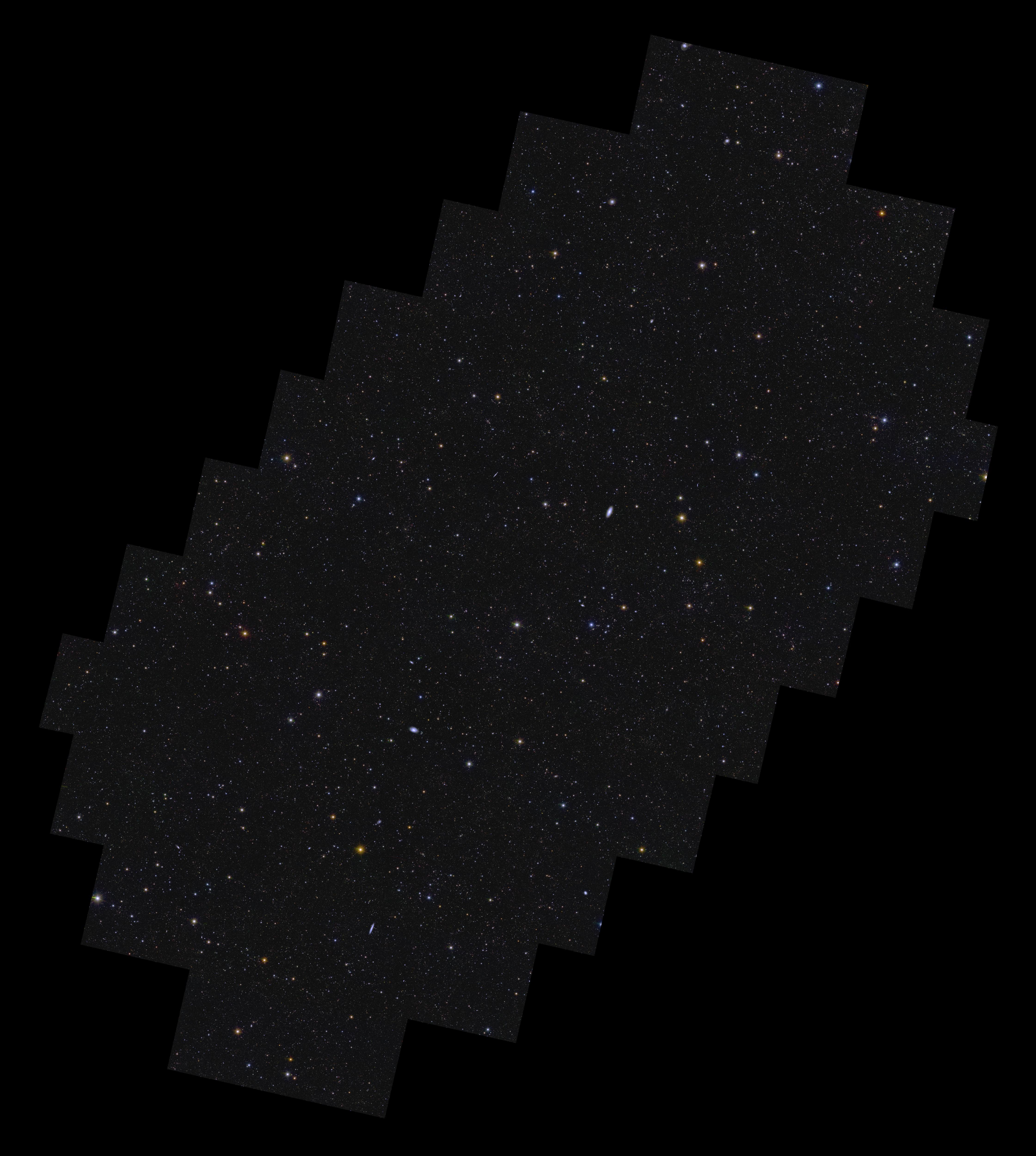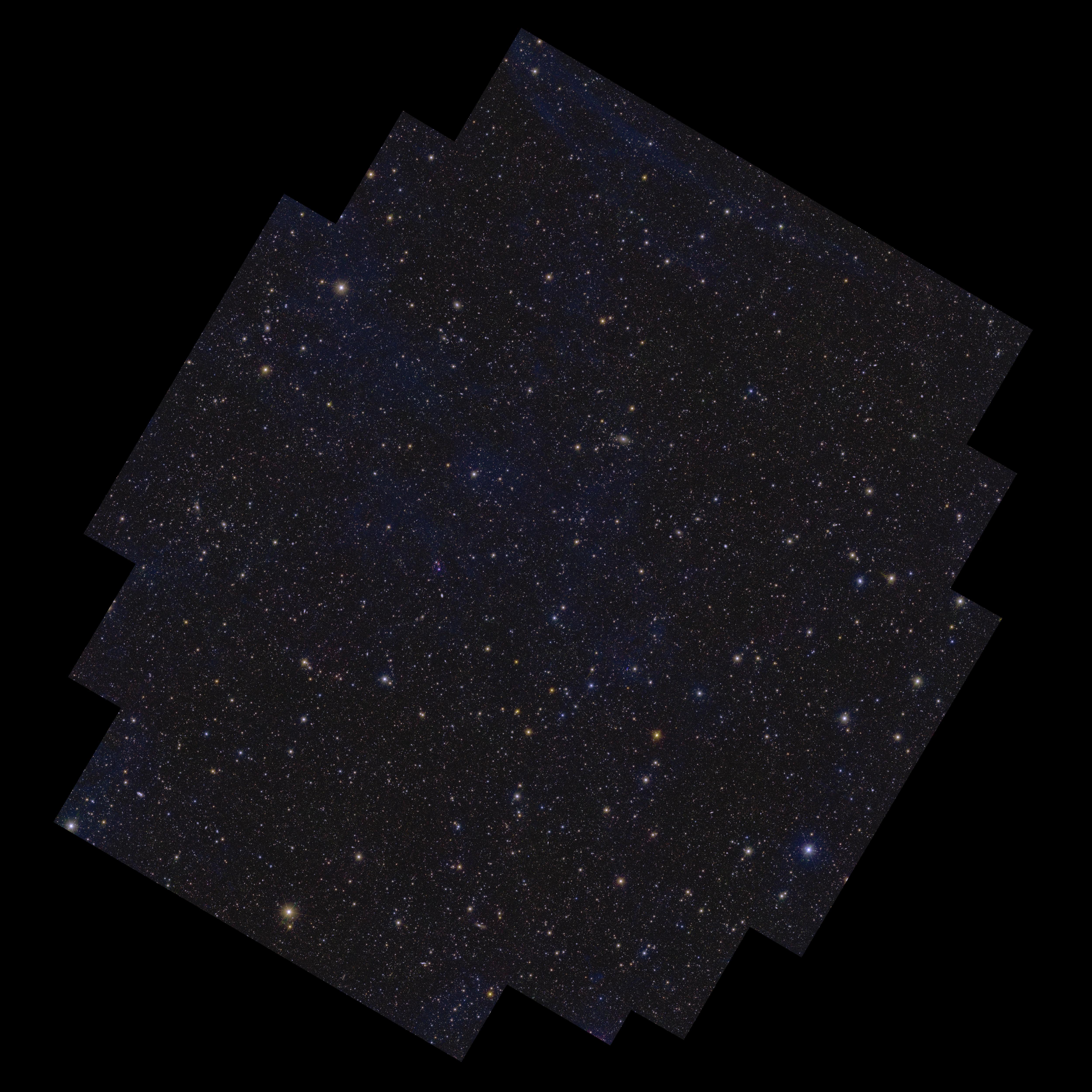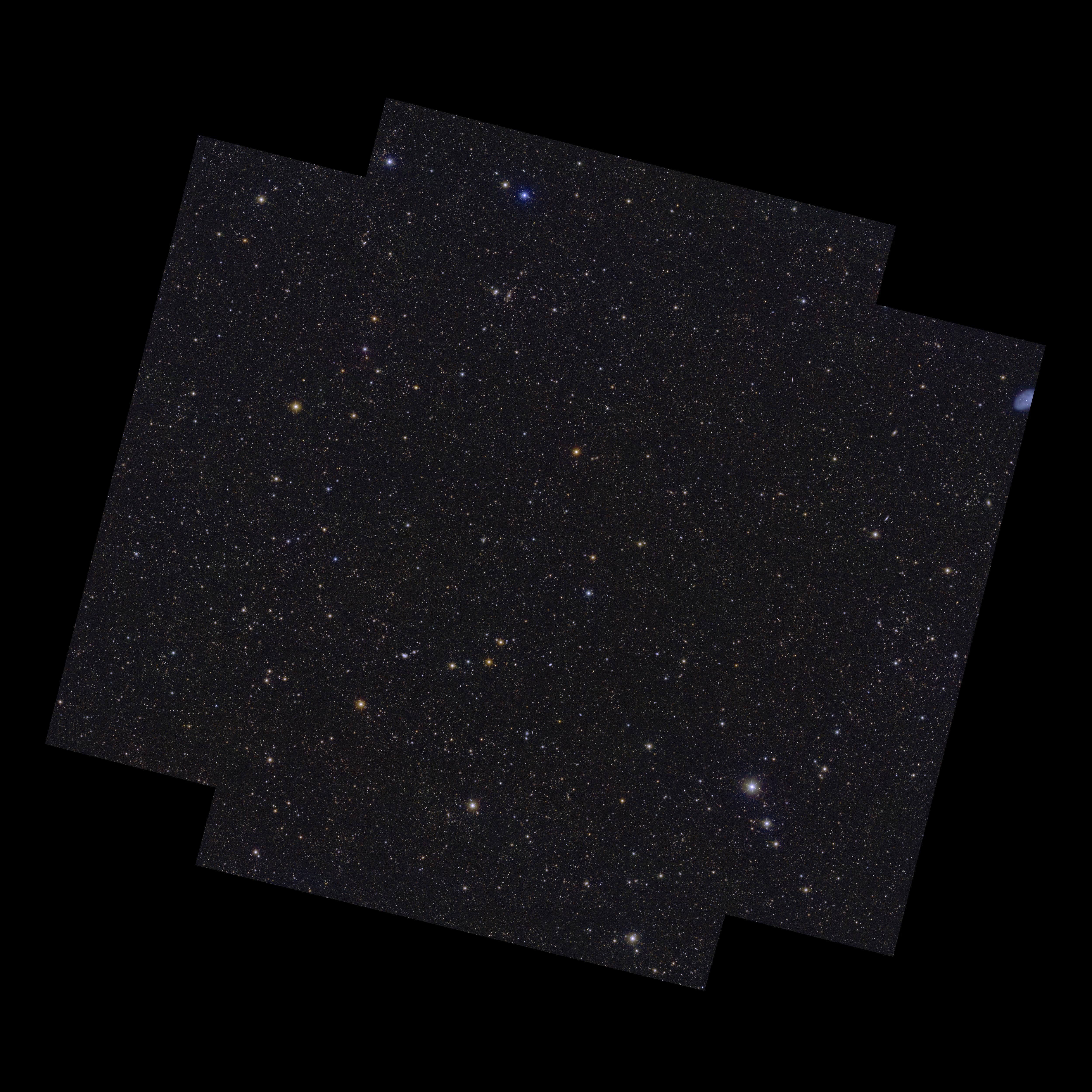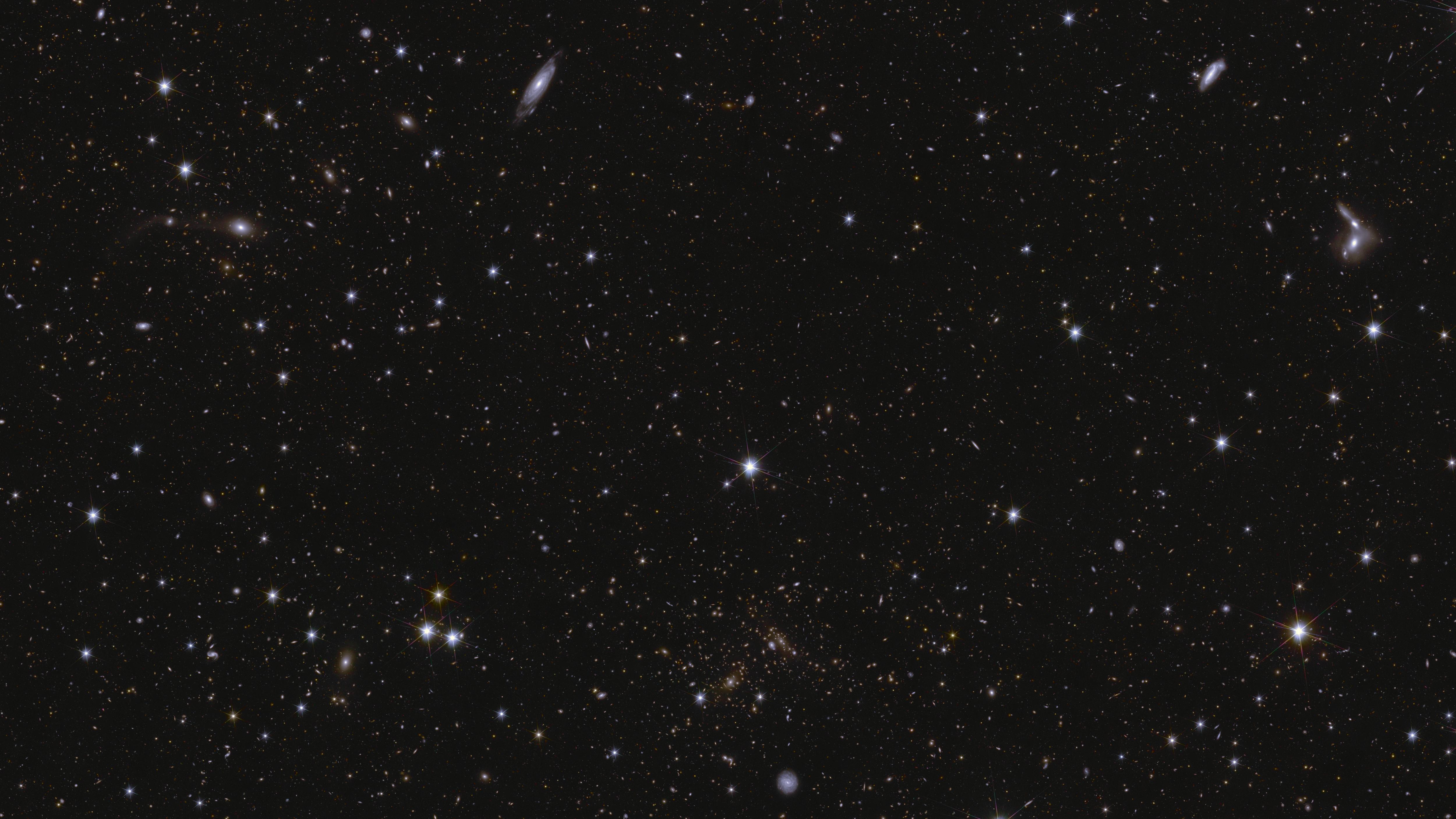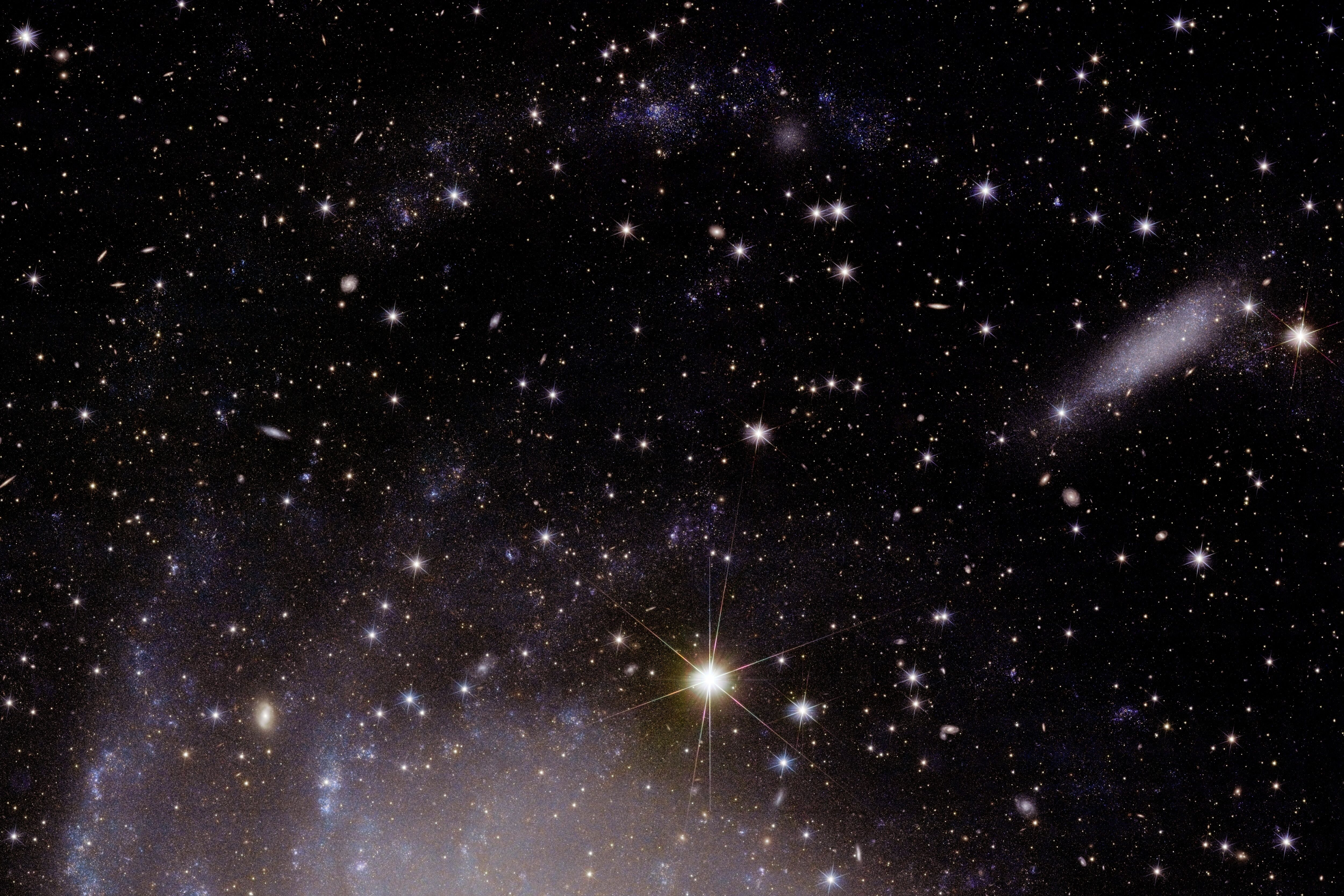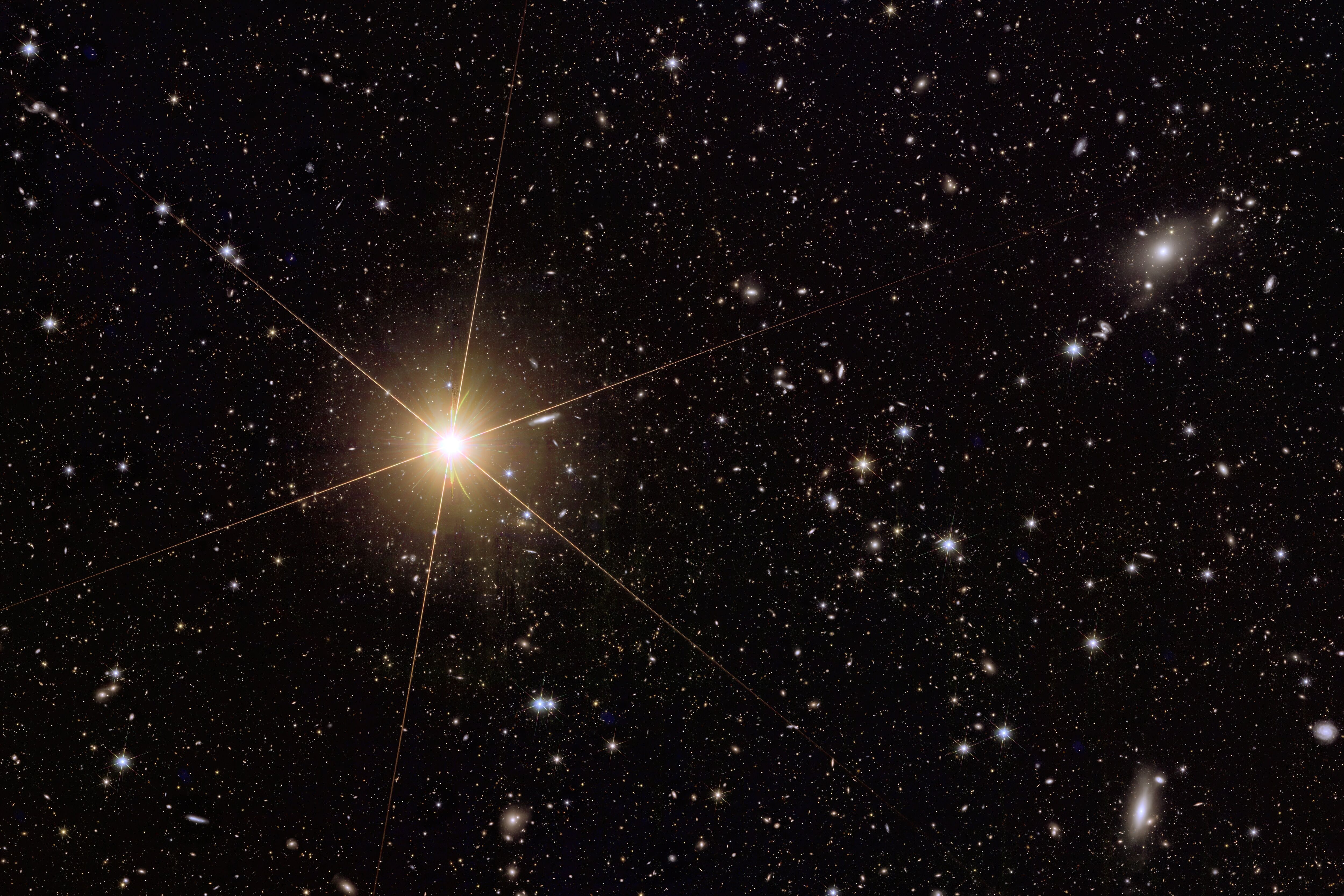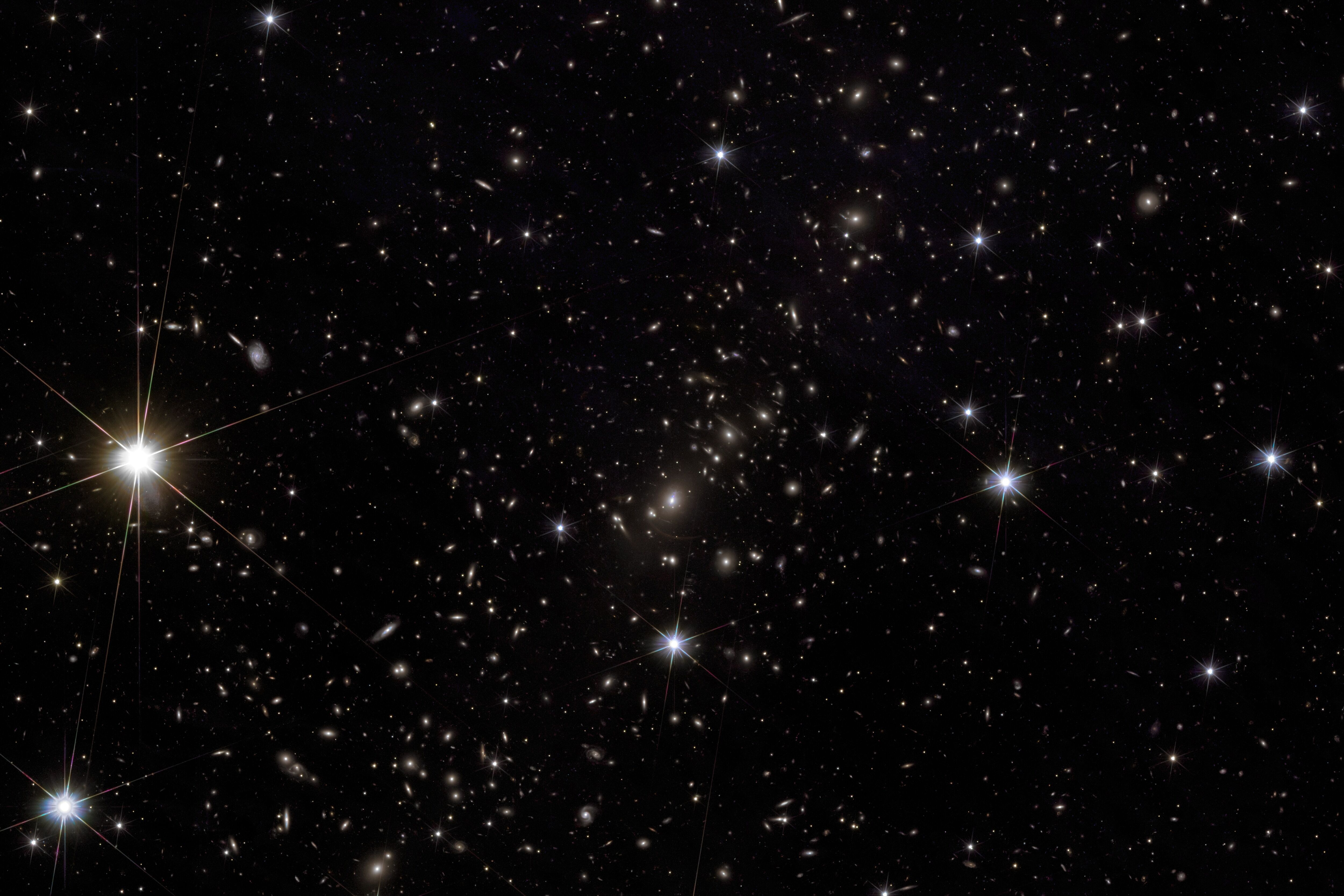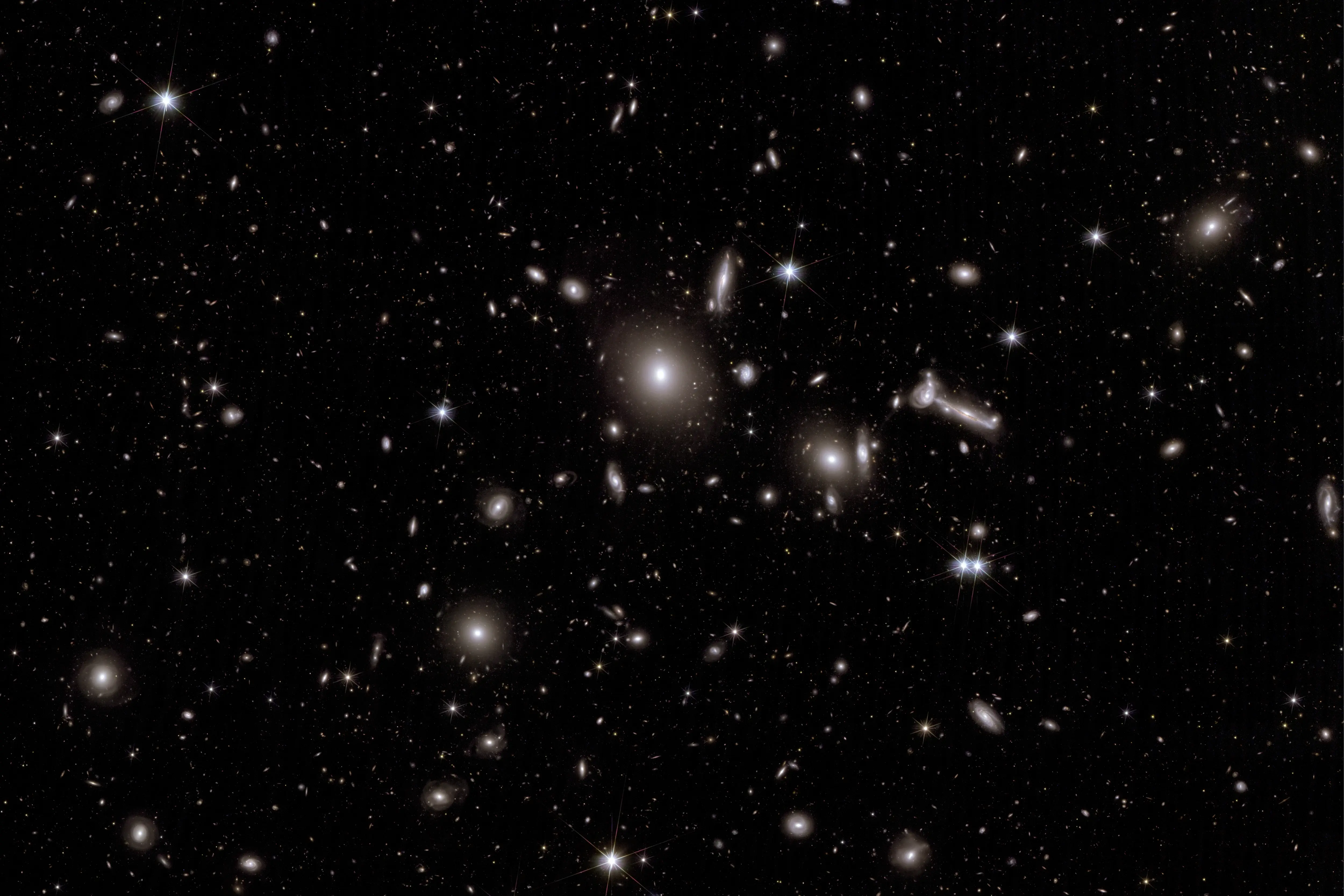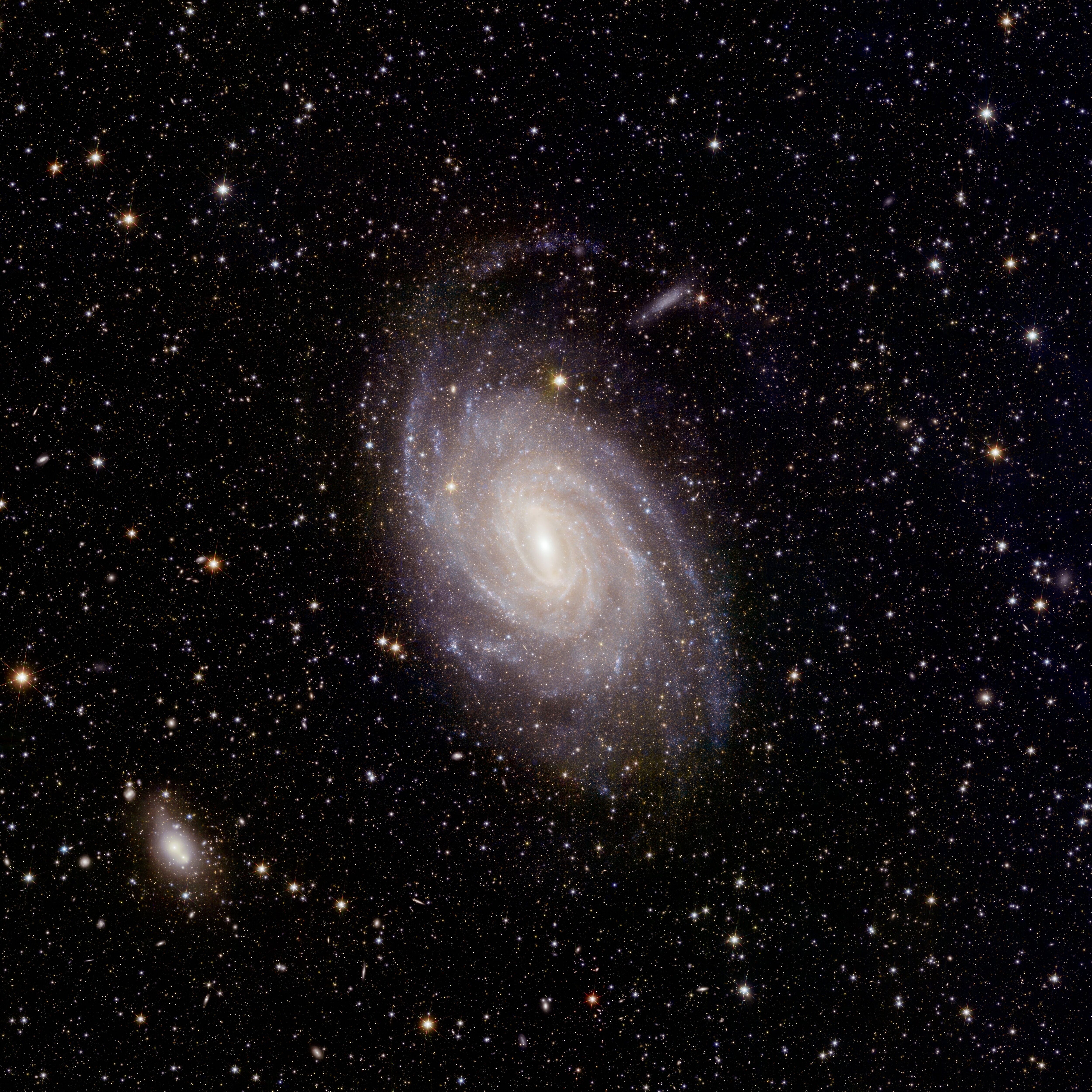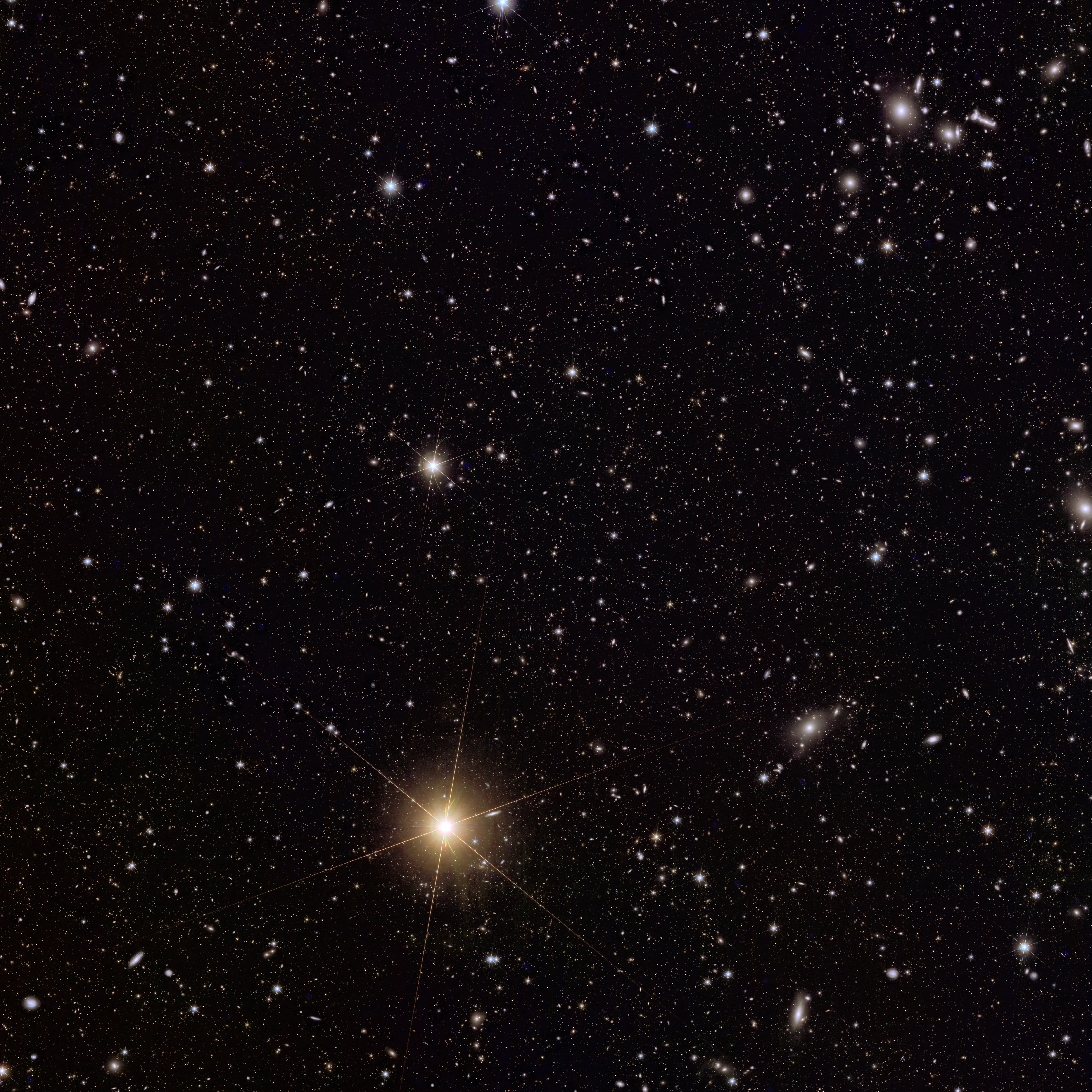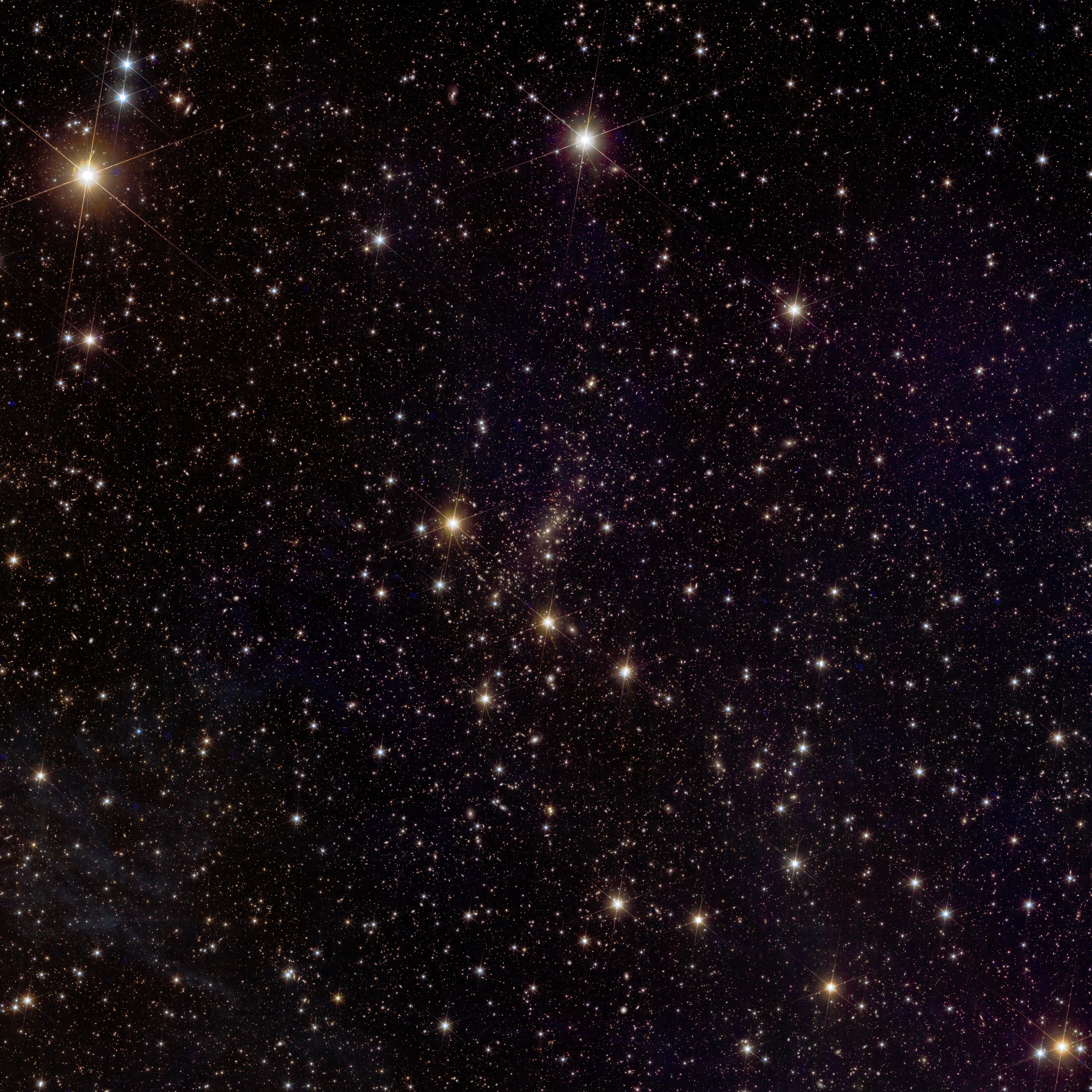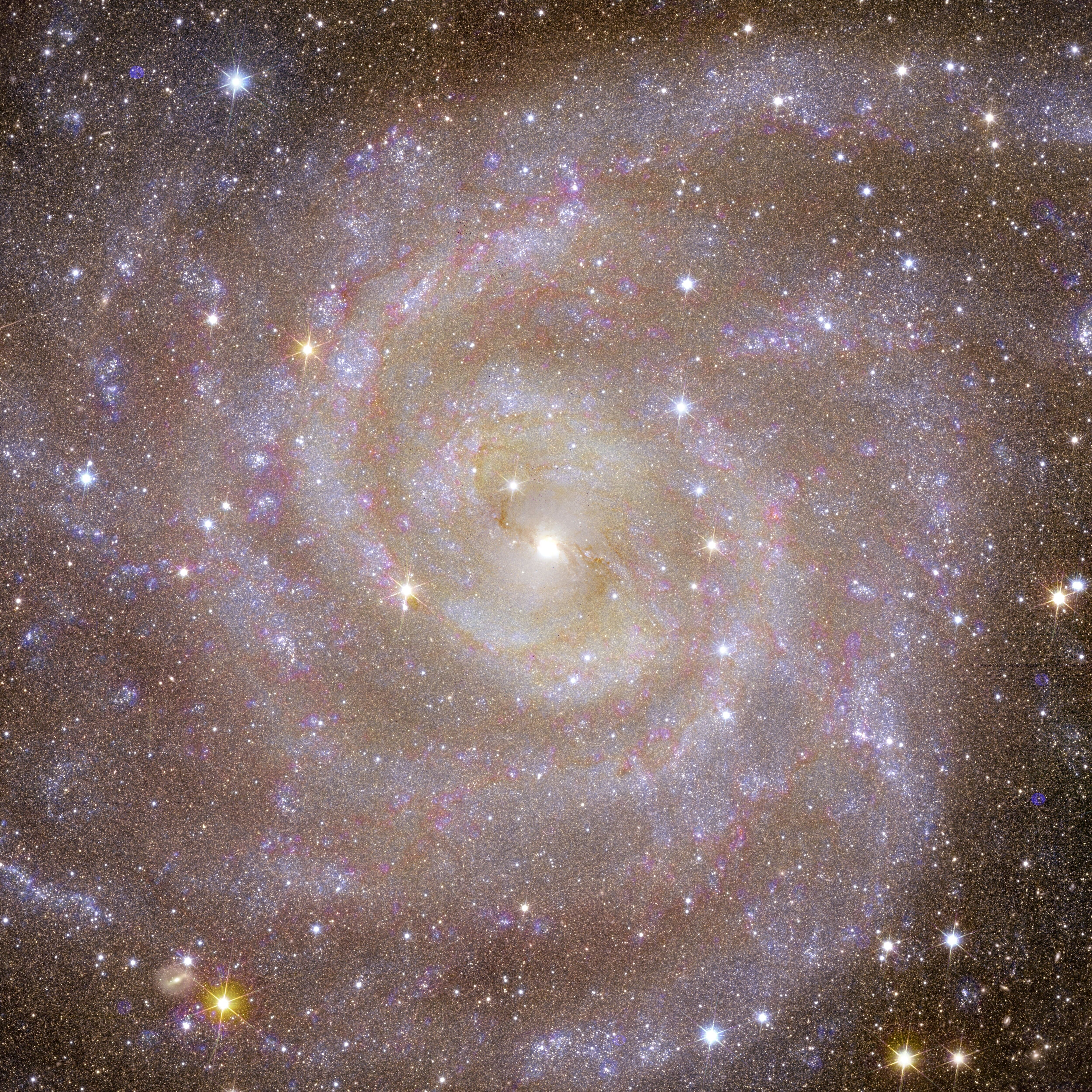
Euclid
Euclid’s view of spiral galaxy IC 342 - Zoom 1
Please sign in to download.
Over its lifetime, our dark Universe detective will image billions of galaxies, revealing the hidden influence that dark matter and dark energy have on them. That’s why it’s fitting that one of the first galaxies that Euclid observed is nicknamed the ‘Hidden Galaxy’. This galaxy, also known as IC 342 or Caldwell 5, is difficult to observe because it lies behind the busy disc of our Milky Way, and so dust, gas and stars obscure our view. Euclid could take this beautiful and sharp image thanks to its incredible sensitivity and superb optics. Most important here is that Euclid used its near-infrared instrument to peer through the dust and measure the light from the many cool and low-mass stars that dominate the galaxy's mass. “That’s what is so brilliant about Euclid images. In one shot, it can see the whole galaxy in all its beautiful detail,” explains Euclid Consortium scientist Leslie Hunt of the National Institute for Astrophysics in Italy, on behalf of a broader team working on showcasing galaxies imaged by Euclid. “This image might look normal, as if every telescope can make such an image, but that is not true. What’s so special here is that we have a wide view covering the entire galaxy, but we can also zoom in to distinguish single stars and star clusters. This makes it possible to trace the history of star formation and better understand how stars formed and evolved over the lifetime of the galaxy.” IC 342 is located around 11 million light-years from Earth, very nearby our own galaxy (in astronomical distances). It is as large as the full Moon on the sky. And as a spiral galaxy, it is considered a look-alike of the Milky Way. “It is difficult to study our own galaxy as we are within it and can only see it edge on. So, by studying galaxies like IC 342, we can learn a lot about galaxies like our own,” adds Leslie. Euclid is not the first to observe the Hidden Galaxy. The NASA/ESA Hubble Space Telescope has previously imaged its core. But until now it has been impossible to study the star-formation history of the entire galaxy. Additionally, scientists have already spotted many globular clusters in this image, some of which have not been previously identified. Euclid will observe billions of similar but more distant galaxies, all distributed along a ‘cosmic web’ of dark matter filaments. In this way, it will provide a 3D view of the dark matter distribution in our Universe. The map of the distribution of galaxies over cosmic time will also teach us about dark energy, which accelerates the expansion of the Universe. [TECHNICAL DETAILS OF IMAGE] The data in this image were taken in about one hour of observation. This colour image was obtained by combining VIS data and NISP photometry in Y and H bands; its size is 8800 x 8800 pixels. VIS and NISP enable observing astronomical sources in four different wavelength ranges. Aesthetics choices led to the selection of three out of these four bands to be cast onto the traditional Red-Green-Blue colour channels used to represent images on our digital screens (RGB). The blue, green, red channels capture the Universe seen by Euclid around the wavelength 0.7, 1.1, and 1.7 micron respectively. This gives Euclid a distinctive colour palette: hot stars have a white-blue hue, excited hydrogen gas appears in the blue channel, and regions rich in dust and molecular gas have a clear red hue. Distant redshifted background galaxies appear very red. In the image, the stars have six prominent spikes due to how light interacts with the optical system of the telescope in the process of diffraction. Another signature of Euclid special optics is the presence of a few, very faint and small round regions of a fuzzy blue colour. These are normal artefacts of complex optical systems, so-called ‘optical ghost’; easily identifiable during data analysis, they do not cause any problem for the science goals. The cutout from the full view of the IC 342 is at the high resolution of the VIS instrument. This is nine times better than the definition of NISP that was selected for the full view; this was done for the practical reason of limiting the format of the full image to a manageable size for downloading. The cutout fully showcases the power of Euclid in obtaining extremely sharp images over a large region of the sky in one single pointing. Although this image represents only a small part of the entire colour view, the same quality as shown here is available over the full field. The full view of IC 342 at the highest definition can be explored on ESASky. [Image description] A big spiral galaxy is visible face-on in white/pink colours at the centre of this square astronomical image. The galaxy covers almost the entire image and appears whiter at its centre where more stars are located. Its spiral arms stretch out across the image and appear fainter at the edges. The entire image is speckled with stars ranging in colour from blue to white to yellow/red, across a black background of space. Blue stars are younger and red stars are older. A few of the stars are a bit larger than the rest, with six diffraction spikes. IMAGE CREDIT: ESA/Euclid/Euclid Consortium/NASA, image processing by J.-C. Cuillandre (CEA Paris-Saclay), G. Anselmi; CC BY-SA 3.0 IGO
